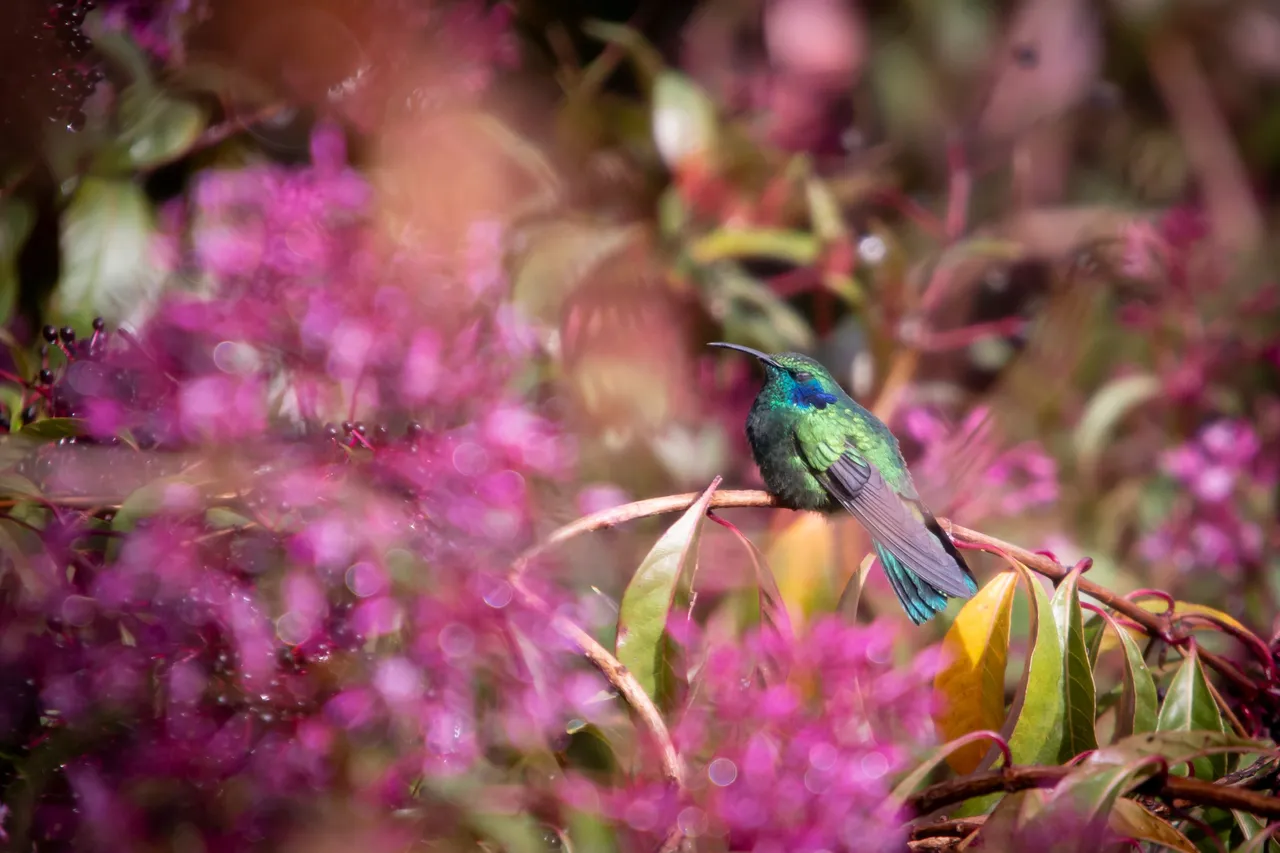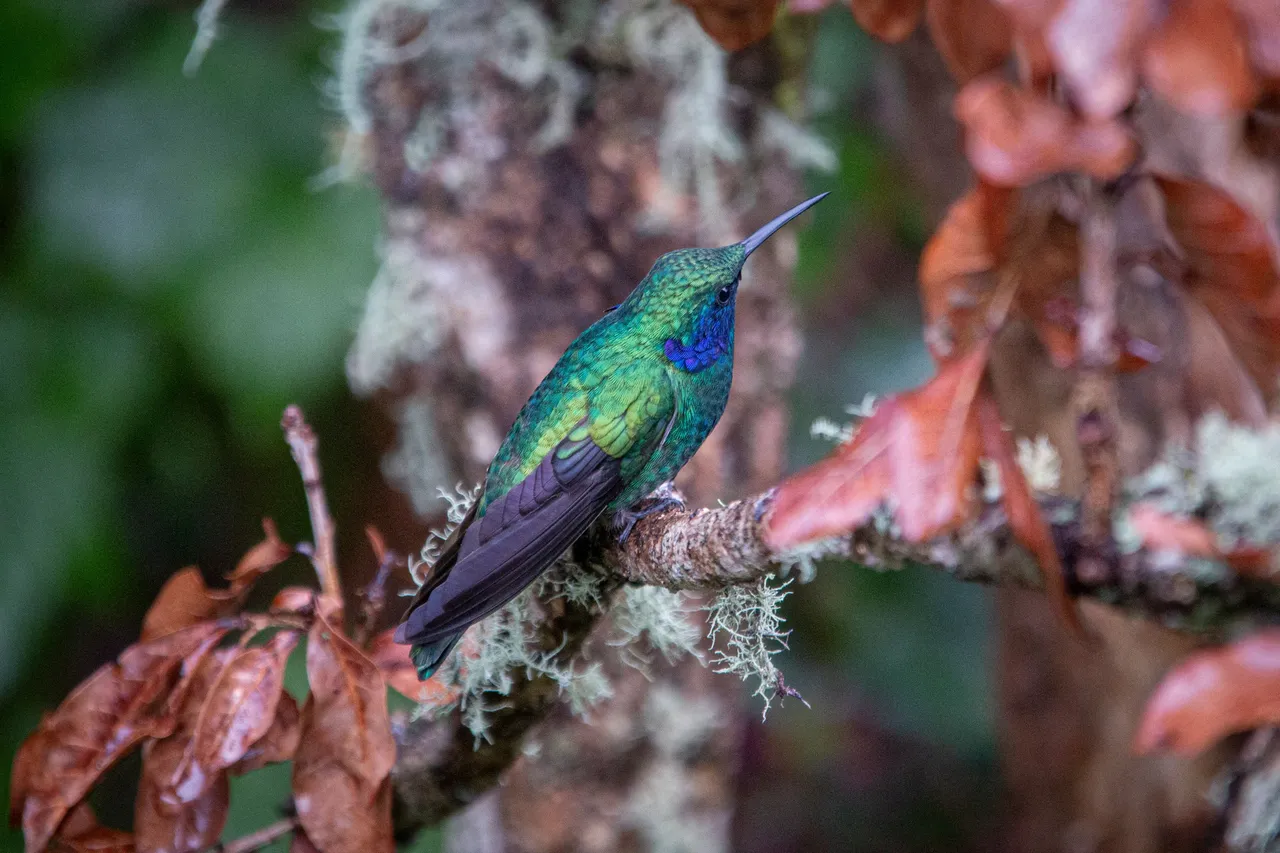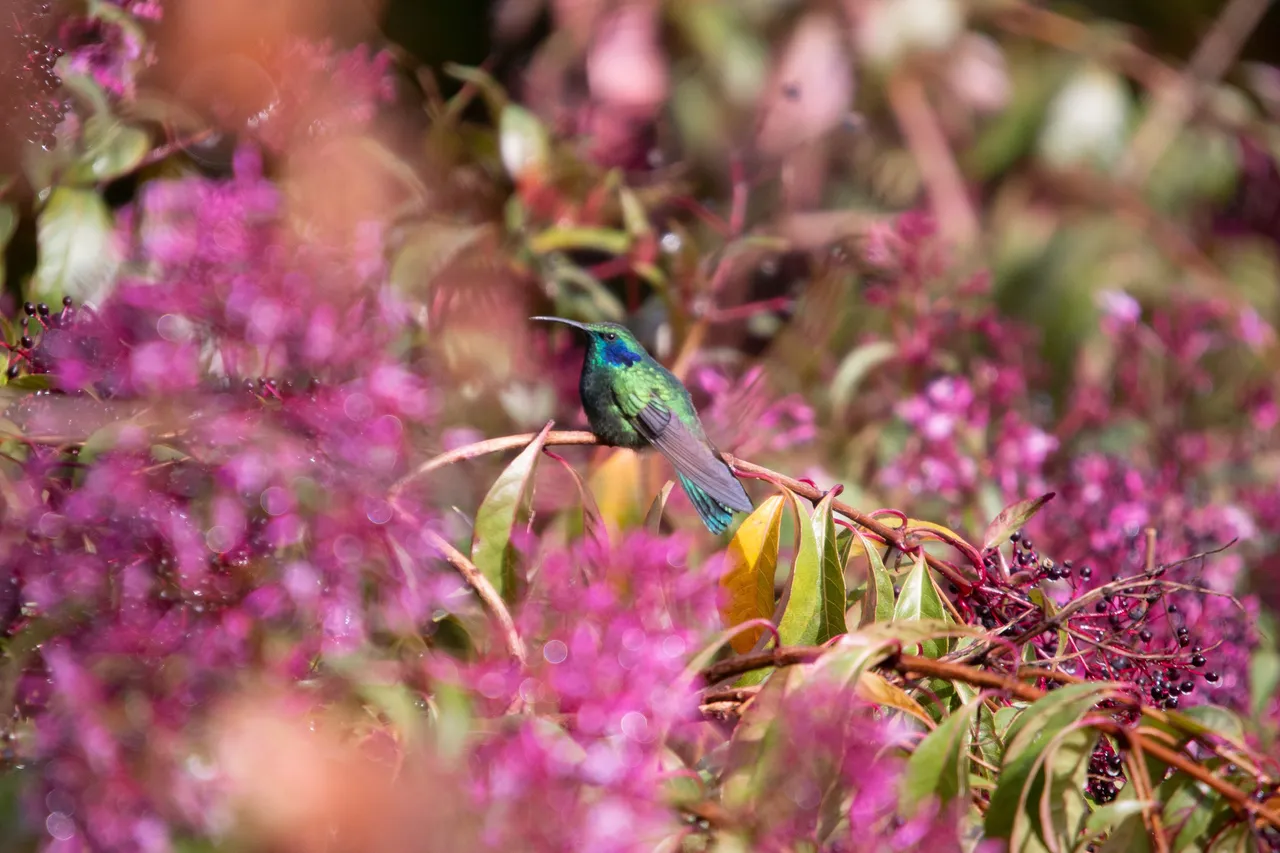
The hummingbird is a very fast bird and has one of the most developed abilities for flight. However, this characteristic comes at a high price, as the rapid metabolism of your body demands high amounts of energy. A hummingbird's heart can beat an average of 1,200 beats per second, while its body temperature can reach 40 degrees Celsius.
They obtain their energy mainly from the sugar present in the nectar of the flowers (although they also supplement their diet with insects). A hummingbird must eat throughout the day and consume the equivalent of half its body weight. Such is their need for calories that under normal conditions they would die if they don't eat for an hour, which presents a big problem at bedtime.

To solve this problem, hummingbirds have developed a dormancy system that allows them to survive at night. In this period, you lower your heart rate to an average of 100 beats per minute, your body temperature drops to equal room temperature, and your kidneys stop working to prevent dehydration.

This hummingbird that I photographed is a Green violet-ear (Colibri thalassinus). It is one of the few species of hummingbird in the San Gerardo area that is not endemic to Costa Rica and Panama. For this reason, it is a relatively common bird in the area, but no less spectacular for that.
Versión en Español
El colibrí es un ave muy rápida y posee una de las habilidades más desarrolladas para el vuelo. Sin embargo, esta característica tiene un alto precio, pues el rápido metabolismo de su cuerpo demanda altas cantidades de energía, El corazón un colibrí puede latir un promedio de 1200 latido por segundo, mientras que su temperatura corporal puede alcanza los 40 grados centígrados.
Obtienen su energía principalmente del azúcar presente en el néctar de las flores (aunque también complementan su alimentación con insectos). Un colibrí debe comer durante todo el día y consumir dirimente el equivalente a la mitad de su peso corporal. Tal es su necesidad de calorías, que en condiciones normales morirían si no se alimentan durante una hora, lo cual presenta un gran problema a la hora de dormir.
Para soluciones este inconveniente, los colibríes han desarrollado un sistema de letargo que les permite sobrevivir durante las noches. En este periodo, disminuyes su frecuencia cardiaca a un promedio de 100 latidos por minuto, su temperatura corporal baja hasta igualarse con la temperatura ambiente y el funcionamiento de los riñones se detiene para evitar la deshidratación.
Este colibrí que fotografié es un Green violet-ear (Colibri thalassinus) Es una de las pocas especies de colibrí de la zona de San Gerardo que no es endémico de Costa Rica y Panamá. Por este motivo, es un ave relativamente común en la zona, pero no por eso menos espectacular.